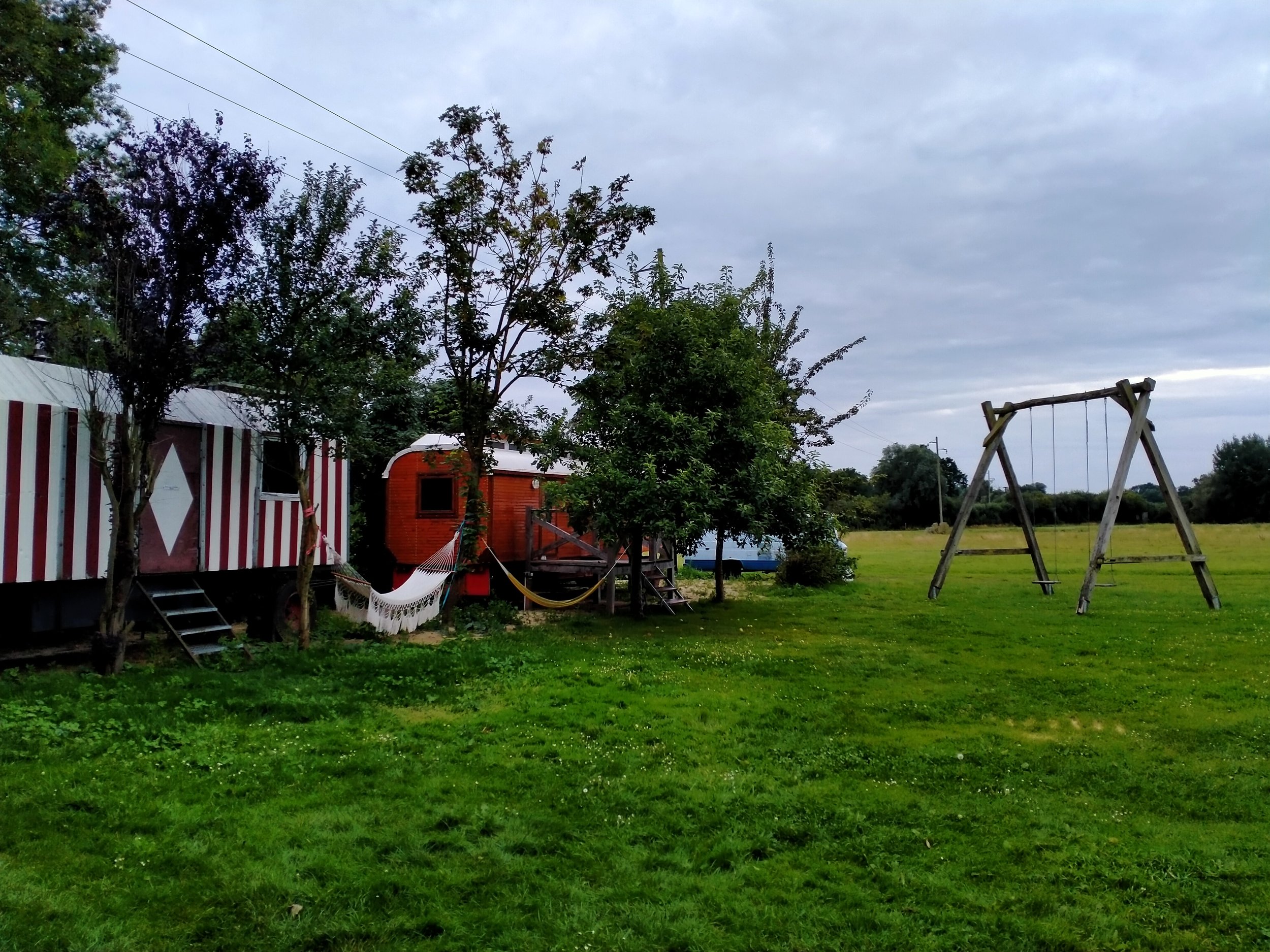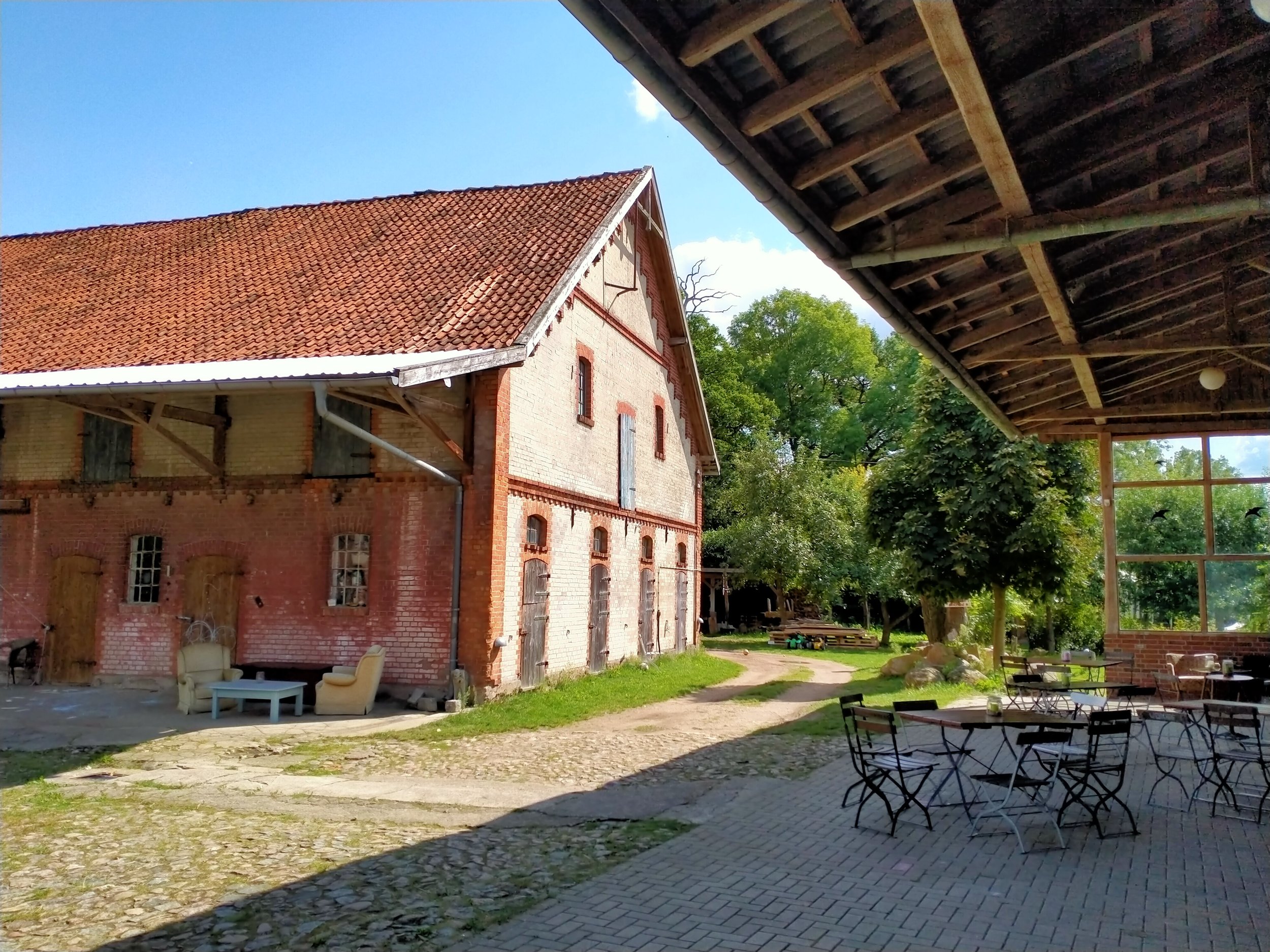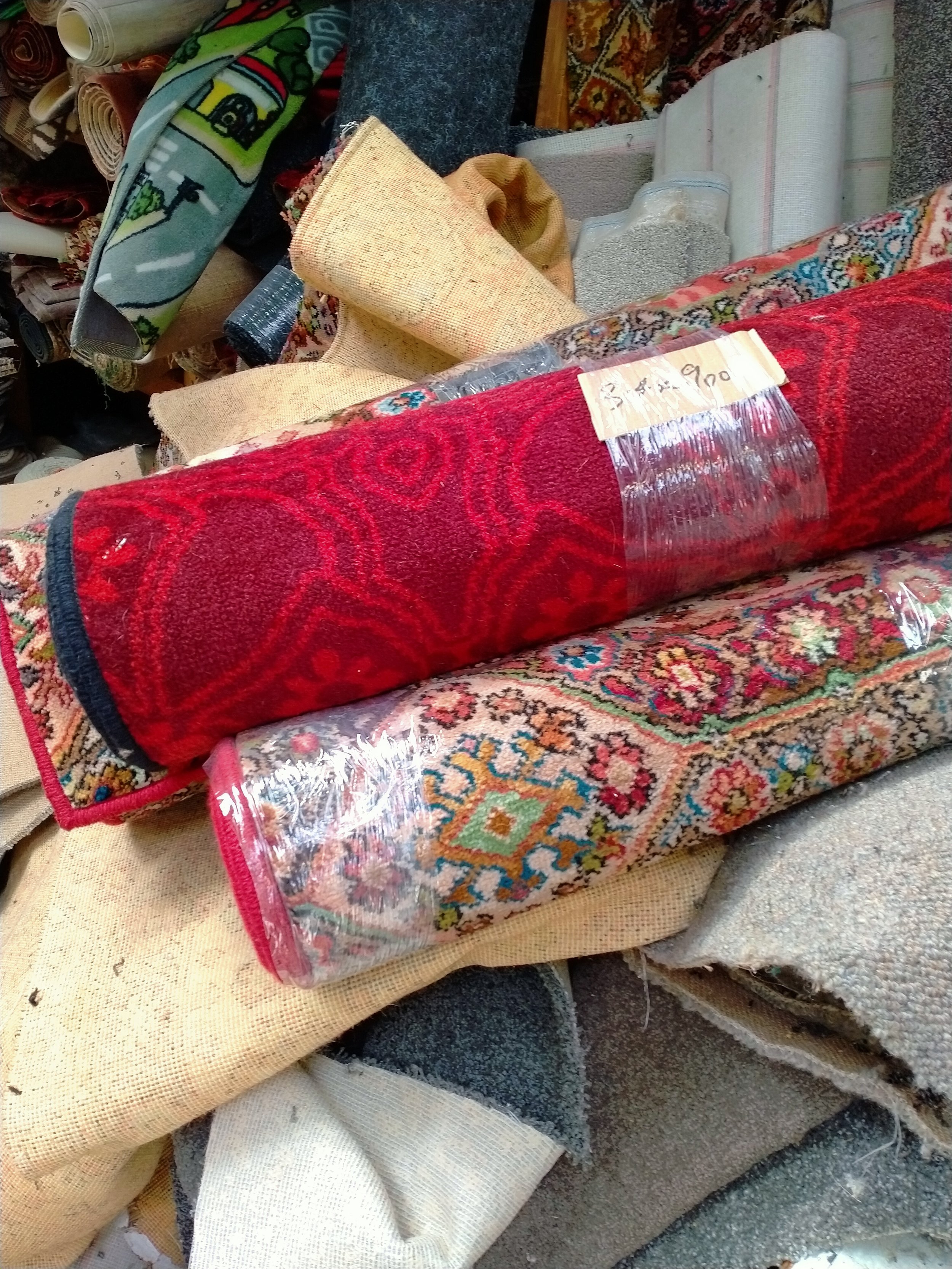creative process
“We should be more green”
“Yes”.
This is on the lengthy side for an average conversation in Finland. I was in Finland having a conversation about our physical theatre and circus company practices and I was the person saying yes. While I agreed, I didn’t accurately understand what more green meant, so in order to fix my ignorance I went about taking account of the environmental impact one of my own creations might have. I recorded travel, working hours, accommodation and venues, materials used and discarded, and then I wrote a report. This is how the creative periods went.
Creation period 1: Ein Ding Der Möglichkeit, Salderatzen, Germany.
Photo Credits: Thom Monckton, train carriages used as accommodation at Ein Ding Der Möglichkeit.
Ein Ding Der Möglichkeit had circus carriages, and a vegetable garden. There was a sauna and grape vines. There was a bar in a disused silo. There were wooden barns, and a theatre. There was a cobbled courtyard. My room was accessed via a secret tunnel at the back of a laundry room. By secret I mean, not secret, and by tunnel I mean just a standard hallway, but it felt secret.
Photo Credits: Thom Monckton, rehearsals with borrowed red carpet in the attic at Ein Ding Der Möglichkeit
My work space was an attic in a barn across the courtyard. The barn was full of tools and OMG-WHATS-THAT-oh-just-birds. I got to the attic via a ladder that I pointed up to a hole in the ceiling. If I wanted privacy I could hoist the ladder up behind me. My light source was sunlight through the holes in the roof, and a pair of overheating work lights that would eventually burn the whole barn down (I assume). The only vehicles I had access to were some slightly wobbly bicycles. The people who facilitated the space had sustainability as part of their kaupapa, and my needs for materials were insignificant since it was only me myself alone and I was mainly just choreographing my legs. It was a magical, inspiring, wonderland of creativity, with that type of newness that can only really be reached by being somewhere foreign.
Photo Credits: Thom Monckton, the barn of the rehearsal attic (left)
I travelled to Germany by plane from Finland, and then a train and then a bus and then a car, returning the same way afterwards. The flight from Finland turned out to be comparatively significant in terms of carbon emissions. Even though the creation period once I had arrived generated precisely 0 travel-related carbon emissions (the lowest of all creative periods in this project), if I took into account the flights, it was overall worse than other periods. Also, as it was a relatively short rehearsal period, the flights had a significant impact on the average emissions. If I wanted the rehearsal period to be roughly comparable to the average emissions of the other rehearsals, I would have had to extend the time in Germany to around 30 days (because being there was good, and getting there was bad so staying there longer is better).
One thing I also noted was my travel from Finland to Aotearoa. Although this wasn’t included as part of the project’s emissions as I wasn’t travelling for this project, I calculated them anyway. My one-way flight alone was more than 4 times the amount of travel-related carbon emissions of the entire project including emissions of all other personnel (occasionally up to 9 people) and all working periods (about 2 1/2 months) on all types of vehicles and transport.
During this creation period I discovered:
Working in an environmentally conscientious space is excellent. When the people around you are taking responsibility for their part everything is so much easier.
Environmentally speaking, travelling faster is generally worse, staying longer is generally better and it's all generally the opposite financially.
The beginning of the creative period is like a joyful romp among the tulips of wonderment. Everything is possible and feasible and all choices have little immediate consequences, so taking the time to prepare ground work, communication, and structures to combat possible unravelling is a good idea. #foreshadowing
Creation period 2: The Anteroom, Port Chalmers, Ōtepoti Dunedin.
Photo Credits: Thom Monckton, rehearsals in The Anteroom in Port Chalmers.
I think Jezebel had arthritis. She laboriously flopped her aching hips onto a patch of sun and drooled. Jez is a cat at The Anteroom, an art space in Port Chalmers, Ōtepoti Dunedin where my partner Niamh (who is also the technician on The King of Taking) and I were staying and rehearsing. The show was now at the stage where it needed some prototype sets and props. I had set myself the goal of using 50% recycled materials and I had started with a bang. I had a $5 chair from the Red Cross covered with $2 curtains ratchet-strapped to a $0 wooden box from the corner. There was a tent-like canopy surrounding the throne made out of borrowed red velvet. I was at 100% so far and so I was basically on par with nature itself…and then things started to unravel.
Photo Credits: Thom Monckton, dress rehearsals at Strathmore Community Hall.
I was caught off-guard at how difficult it was to find an appropriate red runner carpet. One instance we wandered into a carpet shop and the salesperson said emphatically,
“I don’t even know a red carpet”.
I don’t even know what he specifically meant by that but the idea of a carpet in red seemed preposterous and unheard of, or at least not in the last 50,000 years this person had been working with carpets.
Photo Credits: Thom Monckton, carpet shopping continues at the iconic The Mat Shop in Porirua.
Second-hand shopping isn’t all fun and banter with carpet people. I had instances that contradicted what I was attempting to do. While I was sourcing the perfect slipper to satisfy both the costume design and my technical needs, I spent many so hours searching online and took so many trips to check different second-hand stores I was doubting that the time (driving) and effort wasn’t contributing to a greater negative impact than if I’d just bought them new in the first place. In the end that is precisely what happened.
This period highlighted:
Sourcing used materials is easy in the beginning and harder towards the end of the creative process. For rehearsals, I used 87.5% recycled materials, but for the final iterations of set and costume I used 7.7% recycled materials. This was mostly because I contracted multiple people who were very busy and I didn’t communicate effectively that this was a priority or take enough/give enough/have enough time to put towards sourcing recycled materials when the deadlines started arriving.
Incorporating time to recycle/donate/repurpose/dispose of unwanted items at the end of a rehearsal period is a good thing to plan.
Having a designated environmentalist specialist in the group would be awesome.
The King of Taking spent 2.2% of the 900 working hours on environmental related aspects, not including sourcing materials. I would budget 5% in the future give or take depending on the type of project.
Red carpet does not exist.
Creation Period 3: TSB Showplace, Kōputai New Plymouth
Photo Credits: Thom Monckton, rehearsals in a room full of red carpet at TSB Showplace, New Plymouth.
I shouted at Tess. She shouted back at me but it was muffled and distant. The convention space at the back of TSB Showplace was bathed in heat. I was appropriately clad in shorts and a singlet. Tess was inappropriately clad in a badly-fitting suit of armour that clanged loudly with any movement, and the sunlight joyfully pinged off the helmet’s visor and cheerfully baked Tess alive.
The suit of armour was something I found on Trade-Me, from Auckland. I was happy to find something that didn’t need to be imported. After ordering and not hearing anything for 3 weeks, I called the seller who explained there were issues at customs because of the sword.
“Why customs? I thought it was coming from Auckland?”
“No” He wasn’t forthcoming, or he was conversationally-Finnish.
“Ok, so where is it coming from?”
“India” he countered,
“I don’t even know a India!” I fully understood the carpet dude.
So despite my best intentions, this locally made suit of armour from Auckland from India was likely the most environmentally unfriendly item in the props list. Where does my relationship with an object begin and where does it end? When in its story do I become responsible and by how much? Who made the cellotape I bought from Whitcolls!? Is it also from Auckland or from India? Where did it come from originally and who is responsible for tracking the inevitable wake of destruction it will cause to this earth!!?? I found that this period suggested to me:
It’s good to balance environmental aspirations with aesthetic aspirations and anticipate what items deserve more time (suits of armour) and what items deserve less (slippers).
New objects are ethically complicated to understand. Used objects are basic.
We stayed in two Airbnbs between the three of us. They had basic cooking facilities but not great, which meant we ate out more frequently, all of which would have affected our overall footprint/impact.
4. Toi Pōneke, Te Auaha, Strathmore Community Hall, BATS, Te Whānganui-a-Tara Wellington
This period was structured chaos. I was working in multiple locations because the best spaces were too expensive and the cheaper places were not very useful, so jumping between all the available options according to availability and budget was the result. During this period, everyone was either based in the city or working remotely so the overall travel-related carbon emissions were surprisingly low compared to other periods (significantly lower than the naïve period when it was just me by my lonesome in an attic in Germany riding wobbly bicycles through the meadows for example). 68% of travel-related emissions were from one return flight from AKL - WLG and the rest was personal vehicles, with local transport negligible in comparison. Just having one person fly in from out of town tripled our overall travel-related emissions.
I found as more people became involved and deadlines loomed, sourcing recycled materials quickly vanished from my priorities. In retrospect I used pretty soft language communicating that that was a focus. Everyone involved was an independent creative and this was probably 1 of 10 projects they were working on at the same time. Often we were all working in separate places and communicating online. We never met as a group altogether in the same room and it was easy at this point in time not to have recycled materials as front and centre of the comms. It would have been less confusing for contractors if I supplied some kind of roadmap to how prioritising used materials might be achieved.
Key points:
Using local talent and resources is an environmentally friendly choice.
Working sustainably in touring is enough extra work to justify having dedicated personnel.
Chopping and changing rehearsal spaces is a logistical hassle, and makes it harder to keep track of waste and recycling.
Taking time to communicate to your working group that the project is environmentally conscientious has to be done right at the beginning, and be reiterated throughout the process.
Conclusions
It takes substantially longer to incorporate environmental practices into a project. The normalised pace for the touring arts industry doesn’t allow for a slower working style. Asking for extra time from venues, festivals, programmers, and including it in riders and funding applications would be useful for us all to do.
It was useful to do this self-reflective study and I can build on the information as I move on to other projects. I made many mistakes, but like all my projects I went into it with the expectation of some kind of failure and some kind of success. By documenting it I have a better, personalised understanding of how I can improve ad infinitum and I can speak more confidently on what “be more green” might mean.
My aims for future projects are to go slower, travel lower, stay longer, and know a red carpet.
Thom Monckton is a visual and physical performance creator from Aotearoa New Zealand. He is an established solo performer and co-founder of the award-winning Finland-based contemporary circus and physical theatre company Kallo Collective.








